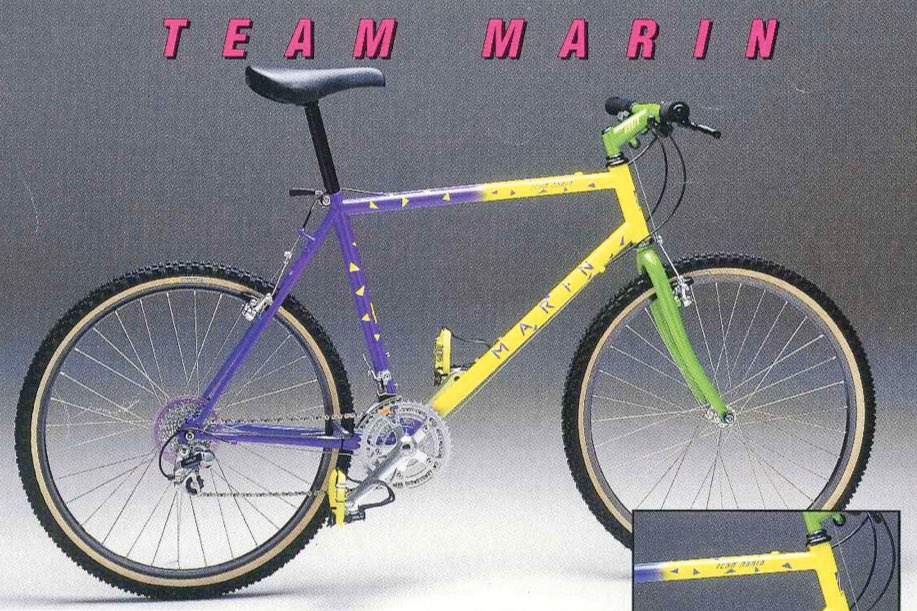The early 90's was a weird time for MTB geometry. Most bikes were still designed around rigid, 380mm a2c forks, but Turner's Rockshox RS1 started showing up in what, 1989?
What I find interesting is that if you look around at some of the early 90's catalogs, many "Teams" were running and marketing suspension forks as "options".
Whenever I mention running a longer fork on my 1990 Marin, I often get ridiculed for "messing up the geometry" and "ruining the purity of the non-suspension corrected handling", but these issues clearly didn't bother bike brands of the 90's, or racers.
Here's the Team Marin from the 1990 Catalog:

And here's the Team Marin that Marin Bikes was showing off at 2015 "30th Anniversary" SeaOtter booth:

The Mag21 pictured there would've been about a 405mm a2c, so not significantly higher than stock rigid forks, but also not so much that it made the bike unusable.
Were bikes during the transition period of front suspension being designed with front suspension in mind? As in, they could handle a little slacker head tube angles, a little slower steering, etc?
What I find interesting is that if you look around at some of the early 90's catalogs, many "Teams" were running and marketing suspension forks as "options".
Whenever I mention running a longer fork on my 1990 Marin, I often get ridiculed for "messing up the geometry" and "ruining the purity of the non-suspension corrected handling", but these issues clearly didn't bother bike brands of the 90's, or racers.
Here's the Team Marin from the 1990 Catalog:

And here's the Team Marin that Marin Bikes was showing off at 2015 "30th Anniversary" SeaOtter booth:

The Mag21 pictured there would've been about a 405mm a2c, so not significantly higher than stock rigid forks, but also not so much that it made the bike unusable.
Were bikes during the transition period of front suspension being designed with front suspension in mind? As in, they could handle a little slacker head tube angles, a little slower steering, etc?